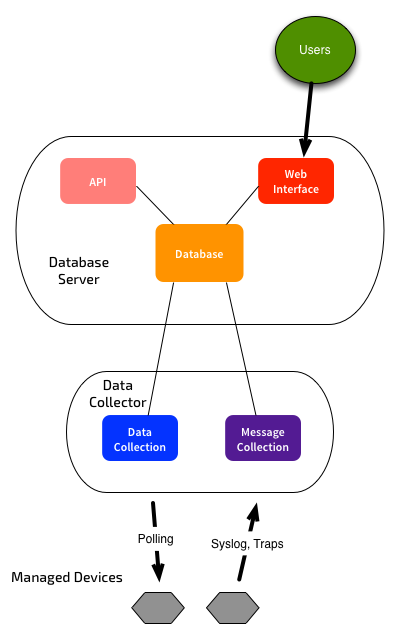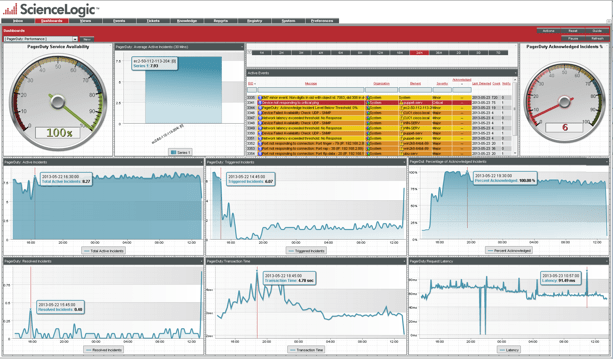

- #Sciencelogic em7 version Patch#
- #Sciencelogic em7 version software#
- #Sciencelogic em7 version professional#
We have a very clear and a very defined vision about the unified cloud and where we're taking that, so it's critical that's to partner with vendors that share that vision. More importantly, a vision that aligned with our own. That's existing integration with AWS, integration with Azure. I also want to have turnkey integration with all of the external platforms to really go and enable the unified cloud. I want to be able to do ICMP, HTTP, TCP, SNMP, those are all my basic stuff. But, outside of that it was your core components. Those are some of the key components there. Having seen a lot of bad monitoring systems, I really knew what we were looking for in terms of a distributed architecture in terms of the ability for collectors to dynamically fail and devices to be able to move within a collector group dynamically, in terms of not storing local state data out on collectors and warehousing it internally. I know a lot about the architecture behind the way good monitoring systems work. It was heavily architecturally skewed because we understand monitoring systems. After you've heard it from two or three really big customers, you know I've got to dos something about it. Realistically speaking, we had a problem that we couldn't even deliver the baseline of services, let alone innovate.
#Sciencelogic em7 version Patch#
Our ability to keep that system current at a current patch level with a vendor was unbelievably complicated. We were in a situation where our ability to integrate new features into our monitoring platform was taking way too long and was way too cumbersome. Our customers should always be pushing us to be better." That was in a sense that's exactly where we were. My boss says to me a lot, "Our customers are the ones that should be pushing us.

We knew the best way that you always know something because your customers are saying to you. Then the integration points that ScienceLogic offers, which each of those key external and internal partners are absolutely critical to us. We want to be able to provide them consistent experiences across all of those. We want the customers to have the ability to deploy their applications across whatever platform they want, be that AWS, or our VMware platform, our Hyper-V platform. HOSTING's vision of the unified cloud is one in which customers don't have to tightly couple the services that they want from us with a platform that we choose for them. It's no longer just a question of being up or down but how up or down something is in terms of its available capacity and our ability to react to that in a timely manner. I have to know when my customers are down, I have to be able to report back to them on SLAs, I need to be able to also report back to them on capacity. The most valuable features of any kind of monitoring system go to its core functionality.
#Sciencelogic em7 version professional#
The UI for any end user facing systems needs to welcome all walks of life, EM7 at present( I know they are working on the UI currently) is really geared to the end users who are professional engineers not necessarily the weekender admin - which if you are professional engineer you're going to feel right at home.
#Sciencelogic em7 version software#
Also your team time for tuning the software release, like I said EM7 consumes alot of data, that always isn't a good thing.įor me the UI lays out very logically, then again I use it every day, but for many of our users navigating the UI gets confusing quickly and before long the user gets lost and frustrated and they give up. If you need to make dead certain that the release is going to deliver I have come to learn every in step of the way to production needs thorough testing before putting it into a production environment - moral of the story here is make no assumptions and read your release notes. When a vendor claims they have a management pack for a given manufacturer, that doesn't necessarily mean its going to be dead on accurate for production use.

QA of their power-packs has been an uphill battle at times, and I feel like it's in part due to how EM7 is marketed. While EM7 covers a lot of ground quickly and is capable of consuming enormous amounts of event and performance data, EM7 ironically has a hard time reporting on it - basic reporting is there, but if you let's say want to run a report for the last 90 days how many Cisco 2900 routers had a critical power supply incident that for one isn't easy and two needs a developer to write a custom report.

Reporting is still a gigantic pain point, we invest a lot of cycles in manufacturing reports off-board -#notfun.


 0 kommentar(er)
0 kommentar(er)
